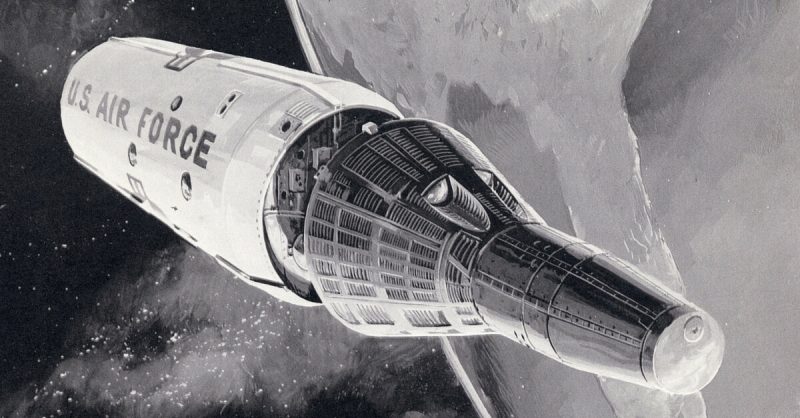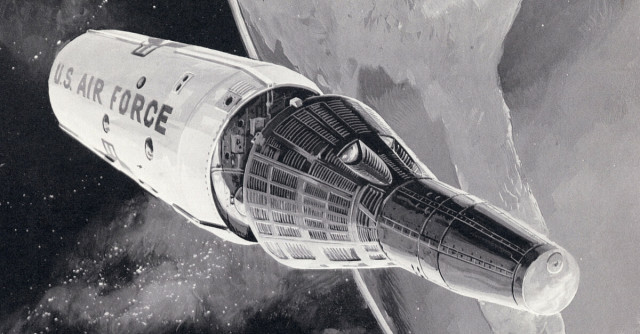Recent American government documents have been released that discuss the details of a secret Cold War project called the Manned Orbiting Laboratory (MOL). This project would have seen America having a permanent presence in space. The American government spent nearly $1.56 billion on the MOL, with the US Air Force in charge of the program that ran from December 1963, until its cancellation in June, 1969.
Although the secret MOL never lofted a crewed space station, the program was very advanced before it was abandoned. The program featured 17 MOL astronauts, a remodeling of NASA’s Gemini spacecraft, the development of the Titan-3C launch vehicle, and even the building of the MOL launching site at Vandenberg Air Force Base in California.
The exact purpose of MOL are still unknown. After the documents were released, many people had questions about it. Some believed that MOL was a laboratory, others thought it was an operational reconnaissance spacecraft, and still others believed it was a bomber. Because the MOL initiative remains a secret, people may never find out the full scope of the project.
The MOL program used the code name Project Dorian. Dorian was actually a super-powerful camera which could take photos of the Soviet Union and other locations during the Cold War and give the US a great strategic advantage. This camera proved to take better resolution photos than any other unmanned system. The Dorian was superior to what was thought to be the best camera at the time, the NRO’s Gambit spacecraft.
The MOL was intended to do far more than just take photos. It was intended to be used for side-looking radar, evaluation of electronic intelligence-gathering gear, and the assembly and servicing of large structures in space. In the documents there was evidence of a design for MOL, to carry missiles which would have been used to carry non-nuclear warheads, of inspection satellites, and of means of encapsulating and recovering enemy spacecraft.
The MOL was intended to be maneuverable, which was key to approaching and circumnavigating a target while the spacewalking astronaut remained at a safe distance.
The documents, one for each 30 days in space, described the astronauts’ experiences while in orbit with the MOL. There were also studies done on the biological and psychological responses of the astronauts. These MOL documents were all released at a specific time on a specific date – an event on October 22nd at the National Museum of the US Air Force at Wright-Patterson Air Force Base in Dayton, Ohio. The event was called “The Dorian Files Revealed: The Manned Orbiting Laboratory Crew Members’ Secret Mission in Space”.
One of the men who spoke at the event said that over time facts are forgotten, causing people to remember inaccurate things. Documentation can correct this and show the truth to those who have forgotten or misinterpreted history. Not only that, but it can also reveal facts that have never been made public before. The speaker also said that MOL was built during the Cold War, when just about everything was kept secret, and it is still hard to determine just what the U.S. was doing with it.
Patricia Cameresi, who is chief of the NRO’s Information Review and Release Group, said that there were more than 20,000 MOL documents, which made it a difficult task to release them to the public. She said it was also difficult to release the information because she had to wait for the stakeholders to agree to it.
Several of those who worked on MOL’s program eventually became NASA astronauts; once the MOL was terminated they had to move on. One of the men who had worked on the program was later to work with Ronald Reagan in the 1980s on the Strategic Defense Initiative, also dubbed the “Star Wars” program. Another said that the MOL wasn’t very hard to work on, but it had been facing problems from the first, including delays and higher costs which eventually brought the project to an end.
If this project had been successful it could have allowed the United States to secure an advantage over the Soviets in the Cold War. The MOL program, if it had succeeded, could have changed history.

